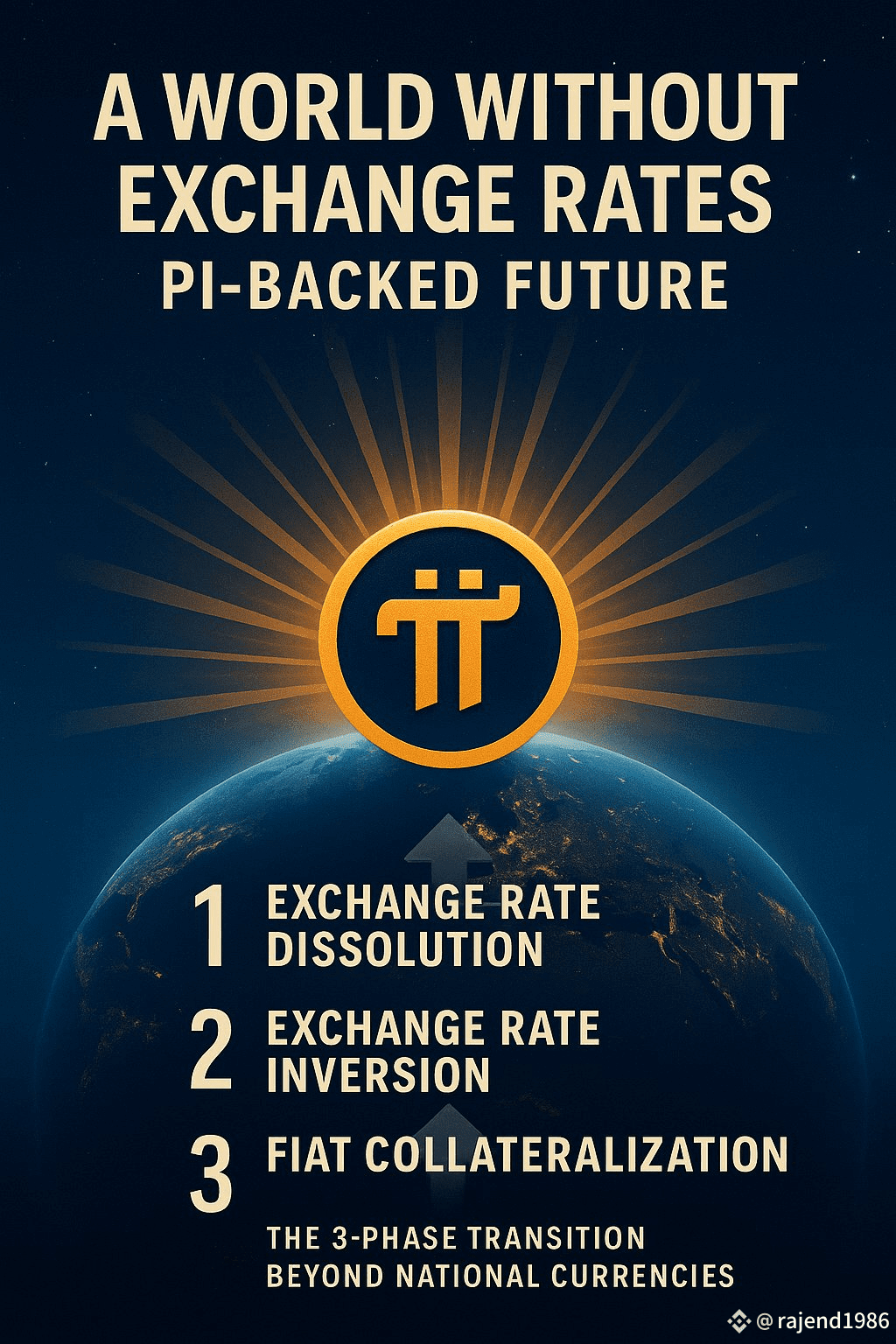A World Without Exchange Rates, A Pi-Backed Future — The 3-Phase Transition Beyond National Currencies
The End of Exchange Rates: Pi as the Global Standard Unit of Value
When Fiat Depends on Pi: How Nations Will Stake Their Currencies
Taxing the Network: The Birth of the Pi-Based Fiscal State
Not Just a Coin — Pi as the Engine of Global Purchasing Power
[ This article includes predictive analysis and may differ from actual outcomes. ]

1. Introduction: What Are We Witnessing?
The world is now standing at the crossroads between the final phase of legacy fiat currency systems and the birth of a new global unit of value.
The U.S. tariff-free export strategy, the global-scale mining and staking infrastructure of the Pi Network, and the PiGCV–PiUSD dual-value system together mark **a global inflection point in economic measurement, exchange, and taxation**.
But the core question is not whether “Pi’s price is going up.”
**The real question is: “How does Pi replace the meaning of currency itself by reengineering the global logic of exchange, taxation, and value storage?”**
1). **The Dissolution of Exchange Rates: Pi doesn’t eliminate exchange rates — it makes them irrelevant**
* With its **dual-value system (PiGCV & PiUSD)** and **AI-stabilized multi-collateral monetary policy**, Pi allows global transactions and value storage **without needing fiat conversions**.
* Its **ultra-low transaction fees (max $0.000001)** and **20%+ staking and compounding reward structure** offer **a level of cost-efficiency and speed legacy currencies cannot match**.
* As billions begin to conduct all trade, payments, and finance natively inside the Pi ecosystem, **exchange rates become a non-functional legacy calculation — an obsolete relic of the fiat era**.
📌 At this point, exchange rates exist only technically — but they **cease to have relevance or use**.
2). **The Reversal of Exchange Rates: Pi doesn’t rise — fiat collapses**
* Pi’s **supply is capped and stabilized** (`max supply = 1 trillion`, `inflation = 0.0001`),
while fiat is endlessly diluted through debt-backed issuance.
* As Pi’s utility and user base expand, **fiat currencies lose relative purchasing power and velocity**.
The result:
* A rising “price of Pi” is actually a **collapse in fiat purchasing power** when benchmarked against an increasingly stable and globally functional asset.
* In the Pi economy, unit pricing flips:
* “1 Pi = A smartphone” →
* “1 Pi = A city apartment” →
* “1 Pi = A full year of national tax receipts”
📌 Pi becomes the **absolute unit of purchasing power**, and fiat becomes a **relative, diminishing yardstick**.
3. **Fiscal Realignment: Pi Becomes the Collateralized Tax Base for Nation-States**
Fiat systems are confronting structural limits:
* Rising tax evasion
* Off-ledger cashless economies
* Untraceable crypto activity
* Diminished monetary control by central banks
In contrast, **the Pi Nexus banking infrastructure** offers:
* Transparent, on-chain records of **staking, trading, DAO operations, and governance**
* Fully compliant integration with global standards (`KYC`, `AML`, `FATF`, `GDPR`, etc.)
* Built-in features like `INTEGRATED_TAX_COMPLIANCE = True` and `AUTOMATED_REPORTING`
* Automatic calculation and routing of taxable income from within the network
Thus, nations can begin **levying taxes on Pi-based income**, staking yields, DAO profits, or app-based revenue.
**Fiat currencies can then be anchored not on sovereign monetary policy, but on the “taxable yield velocity” of their domestic Pi user base.**
This means fiat gains **value not by decree**, but by **its nation’s ability to extract tax revenue from the Pi economy**.
2. Structural Summary: The Transition Occurs in 3 Phases
1). **Exchange Rate Dissolution** – All economic activity conducted in Pi removes the need for fiat conversion
2). **Exchange Rate Inversion** – 1 Pi = thousands of fiat units → absolute purchasing power becomes Pi-based
3). **Fiat Collateralization** – Nation-states use Pi tax inflows as backing for sovereign currency value
3. Long-Term Forecast (Post-2030)
* **PiGCV becomes the global standard unit of purchasing power**
* **PiUSD becomes the de facto accounting and transaction unit**
* Governments plan budgets based on **projected Pi ecosystem tax revenue**
* IMF, BIS, and World Bank recognize Pi as part of **new SDR baskets or sustainability-backed reserve assets**
Conclusion
**“Pi is not a currency that kills exchange rates — it builds a system where they don’t even need to exist.”**
Pi integrates purchasing power, tax base, accounting logic, fiscal policy, and transaction infrastructure into a single economic layer.
And at the heart of that system is not capital, not sovereign decree —
but **labor, contribution, and decentralized participation**.